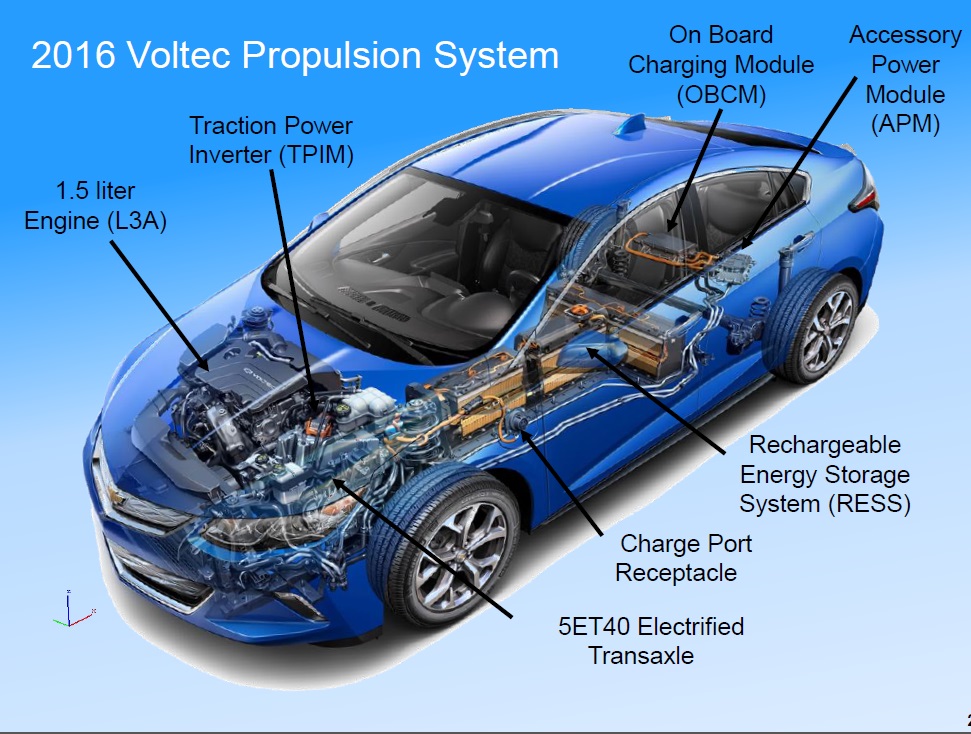The biggest challenge in introducing new technologies is getting to the volume production that permits economies of scale for expensive components.
Toyota is now nearing 9 million hybrids produced, over almost 20 years--but it builds 10 million cars a year.
General Motors, on the other hand, has now built roughly 100,000 Chevrolet Volt range-extended electric cars over five years, out of annual production of 9 to 10 million vehicles.
DON'T MISS: Toyota Passes 8 Million Hybrids Sold Since 1997, Still Dominates Sector (Aug 2015)
The second-generation hybrid system used in the 2016 Chevrolet Volt is also being used in the 2016 Chevy Malibu Hybrid and the 2017 Cadillac CT6 Plug-In Hybrid, but those two vehicles may not be enough to drive down costs.
So, it appears GM has decided that it's willing to sell the system for use by other carmakers as well--under the right circumstances.
That news came from an interview with Dan Nicholson, GM's global powertrain chief, published in the auto-industry trade journal Automotive News.

2016 Chevrolet Volt plug-in hybrid - details of Voltec drivetrain from SAE presentations, Feb 2015
The comment came during the usual journalist scrum at the opening of the new GM Powertrain Performance and Racing Center in Pontiac, Michigan.
Nicholson told the publication that GM wanted to be "the partner of choice in propulsion system development" in what he called "this complex and turbulent era" of higher fuel-economy rules and multiple advanced technologies.
He suggested that GM has a longstanding history of being "a good partner" to other automakers.
ALSO SEE: Five Years After Launch, 200,000th Nissan Leaf Electric Car Sale Coming Up
And while at least a handful of smaller Asian makers--Mazda and Subaru among them--are likely to adopt the next-generation Toyota plug-in hybrid system to meet upcoming regulations, GM might provide an alternative for other makers.
Smaller manufacturers that will face pressure to sell plug-in hybrids under upcoming California zero-emission vehicle laws include Jaguar Land Rover.
It appears that Fiat Chrysler, Ford, Honda, Mitsubishi, and Nissan have developed plug-in hybrid systems internally, or are doing so now.

2016 Chevrolet Volt, first drive in California, July 2015
Given GM's strength in China, partnered with SAIC and other companies, it's also possible that the latest Volt system might be sold to a Chinese company.
That country's new-car market is currently snapping up so-called New Energy Vehicles, both battery-electric and plug-in hybrid, due to incentives offered by local, state, and national authorities.
Plug-in hybrids are especially popular, because they qualify for incentives even if they're never plugged in to run on electricity.
MORE: Chevrolet Volt: Green Car Reports' Best Car To Buy 2016
Selling fully-assembled Volt powertrains--or even the Voltec drive unit alone--could help GM chip away at the high cost of its latest plug-in hybrids, making them more competitive against conventional cars in an era of cheap gasoline.
With Toyota now on the fourth generation of its hybrid system, having sold almost 100 times the number that GM has, any incremental volume has to be a plus for GM.
Especially if marketing the Volt continues to be as much of a challenge for Chevrolet as it has proven to be thus far.
_______________________________________













